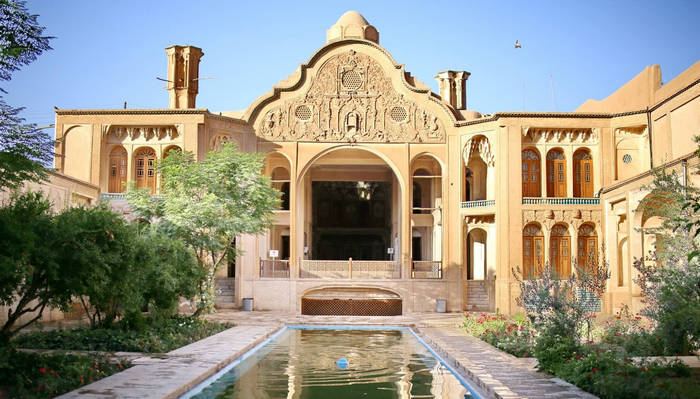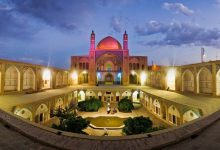Borujerdi House: what you know about it + video
Borujerdi House : Stepping into the heart of Kashan, one of Iran’s most ancient cities, is akin to stepping into a veritable time capsule. Among its many historical treasures, the Borujerdi House stands as a testament to the elegance, artistry, and engineering prowess of traditional Persian architecture. Built during the Qajar era, this residential marvel, with its delicate murals, wind towers, and stucco reliefs, has transcended its original role as a residence, becoming an invaluable repository of Iranian cultural history.
SECRETS o KASHAN, 2023 Walking Tour of Borujerdi House in 4K! IRAN :
Historical Background
Kashan, located in the Isfahan province of Iran, has a history that spans thousands of years. It was a hub of civilization, trade, and culture during ancient times and played a significant role in the Silk Road trade route. The city is renowned for its architectural wonders, which range from intricate mosques to sophisticated residential houses. Among them, the Borujerdi House, constructed in the late 1850s for the bride of a wealthy merchant named Haj Sayyed Jafar Natanzi, stands out. The house was designed by Ustad Ali Maryam, a notable architect who also designed other famous structures in Kashan.

Borujerdi House
Architectural Features and Design
One of the primary features of the Borujerdi House is its wind towers or badgirs. These structures are designed to capture even the slightest breeze, directing it downwards to cool the interior spaces, showcasing the ingenuity of ancient Persian passive cooling techniques. In a desert environment like Kashan, where temperatures can soar, such an architectural feature was not merely ornamental but was crucial for creating comfortable living conditions.
As one moves beyond the functional brilliance of the wind towers, the aesthetic beauty of the house becomes palpable. The house boasts intricate stucco work, particularly in its main hall. These designs, often floral or featuring birds, reflect the natural world, bringing a sense of the outdoors inside. The delicate patterns, molded with dexterity, offer visual pleasure and also serve as evidence of the skilled craftsmen who once practiced their art in ancient Persia.
Furthermore, the murals painted on the walls and ceilings deserve special mention. Influenced by the Qajar style, these murals depict scenes of Persian legends, historical events, and even portrayals of European visitors, thereby giving observers a panoramic view of the cultural milieu of the era. These artworks, filled with intricate details, often utilized a combination of bright and muted colors, striking a balance between vibrancy and elegance.
The layout of the Borujerdi House is also noteworthy. The house was designed around a central courtyard, a common feature in Persian architecture. This courtyard not only allowed for ventilation and cooling but also served as a private outdoor space for the family. Around this courtyard, rooms are organized in a way that segregates public and private areas, ensuring the privacy of family members while accommodating guests.

Cultural Significance
Beyond its architectural grandeur, the Borujerdi House serves as a reflection of the socio-cultural norms and values of its era. The meticulous design of the house was not merely for visual pleasure; it also encapsulated the lifestyle, beliefs, and social norms of the inhabitants and the larger community.
For instance, the segregation of spaces, especially between public and private areas, reflects the importance of privacy in Persian culture. While the house was a place of gathering and socializing, it was also a sanctuary, a place where family life remained shielded from the outside world.
Moreover, the artwork and murals within the house depict not only Persian legends but also the influences of trade and contact with other cultures. The inclusion of European figures in some of the murals underlines the cosmopolitan nature of trade cities like Kashan, hinting at a cross-cultural exchange that went beyond commerce, influencing art, culture, and daily life.
Preservation and Legacy
Today, the Borujerdi House is no longer a private residence. It has been transformed into a museum, open to the public, allowing visitors to immerse themselves in its splendor. Recognizing its historical and architectural significance, efforts have been made to preserve and restore the house, ensuring that future generations can also appreciate its beauty and ingenuity.
In essence, the Borujerdi House is not merely bricks and mortar; it is a tangible connection to Iran’s rich past. Through its walls, murals, and arches, the house narrates tales of a bygone era, of skilled artisans, of trade, of a thriving culture, and of an architectural genius that understood how to harness the elements. It remains a proud testament to Persian heritage and an irreplaceable gem in the heart of Kashan.


